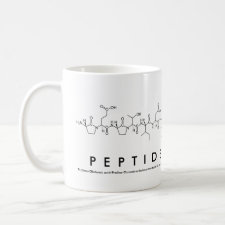
Authors: Wang MF, Lv YQ, Liu XJ, Qi W, Su RX, He ZM
Article Title: Enhancing the Activity of Peptide-Based Artificial Hydrolase with Catalytic Ser/His/Asp Triad and Molecular Imprinting.
Publication date: 2016
Journal: ACS Applied Materials & Interfaces
Volume: 8
Issue: (22)
Page numbers: 14133-14141.
DOI: 10.1021/acsami.6b04670
Abstract: In this study, an artificial hydrolase was developed by combining the catalytic Ser/His/Asp triad with N-fluorenylmethoxycarbonyl diphenylalanine (Fmoc-FF), followed by coassembly of the peptides into nanofibers (CoA-HSD). The peptide-based nanofibers provide an ideal supramolecular framework to support the functional groups. Compared with the self-assembled catalytic nanofibers (SA-H), which contain only the catalytic histidine residue, the highest activity of CoA-HSD occurs when histidine, serine, and aspartate residues are at a ratio of 40:1:1. This indicates that the well-ordered nanofiber structure and the synergistic effects of serine and aspartate residues contribute to the enhancement in activity. Additionally, for the first time, molecular imprinting was applied to further enhance the activity of the peptide-based artificial enzyme (CoA-HSD). p-NPA was used as the molecular template to arrange the catalytic Ser/His/Asp triad residues in the proper orientation. As a result, the activity of imprinted coassembled CoA-HSD nanofibers is 7.86 times greater than that of nonimprinted CoA-HSD and 13.48 times that of SA-H
Template and target information: p-nitrophenyl acetate, p-NPA
Author keywords: peptide assembly, nanofiber, artificial enzyme, catalytic triad, molecular imprinting



Join the Society for Molecular Imprinting

New items RSS feed
Sign-up for e-mail updates:
Choose between receiving an occasional newsletter or more frequent e-mail alerts.
Click here to go to the sign-up page.
Is your name elemental or peptidic? Enter your name and find out by clicking either of the buttons below!
Other products you may like:
 MIPdatabase
MIPdatabase









